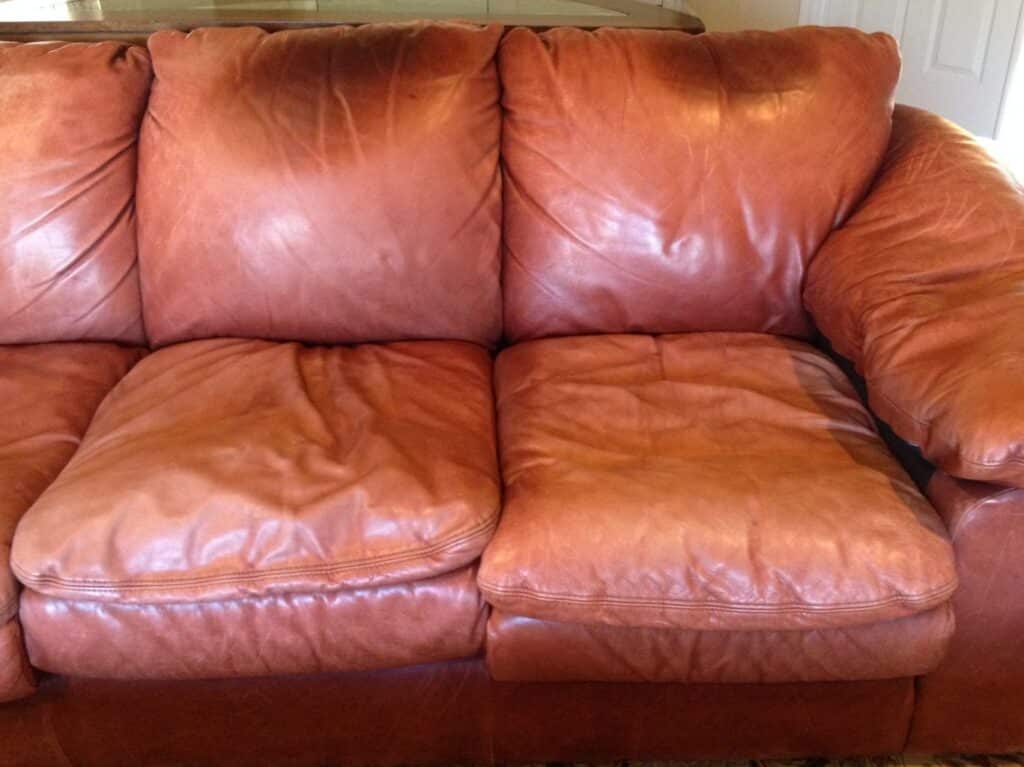Understanding Leather and Oil Stains

Before diving into the cleaning process, it’s crucial to understand the nature of leather and how oil interacts with it. This knowledge will help you choose the most effective cleaning method and avoid damaging your precious leather chair.
Leather Types and Oil Stain Susceptibility
Leather is a natural material derived from animal hides, and its properties vary depending on the type of animal and the tanning process. Some leather types are more susceptible to oil stains than others.
- Aniline Leather: This type of leather is minimally treated, leaving the natural grain and texture intact. Its porous nature makes it highly susceptible to oil stains, as the oil can penetrate deeply into the leather.
- Semi-Aniline Leather: This leather is treated with a thin layer of pigment, making it slightly more resistant to oil stains than aniline leather. However, it’s still vulnerable to deep penetration.
- Protected Leather: This type of leather has a protective coating applied to its surface, making it more resistant to oil stains. The coating prevents oil from penetrating deeply, making it easier to clean.
- Top-Grain Leather: This leather is treated with a thicker layer of pigment and a protective coating, making it the most resistant to oil stains.
Oil Properties and Interactions with Leather, How to remove hair oil from leather chair
Oil is a hydrophobic substance, meaning it repels water. This property makes it difficult to remove oil stains from leather, as water-based cleaning solutions are ineffective. Oil can also penetrate the pores of leather, causing discoloration and damage.
Identifying the Type of Oil Stain
Knowing the type of oil that caused the stain is essential for choosing the appropriate cleaning method. Some common oil stains include:
- Cooking Oil: This type of oil is usually a vegetable-based oil, such as olive oil or canola oil. It can be sticky and difficult to remove.
- Hair Oil: Hair oil is typically made from natural ingredients, such as coconut oil or argan oil. It can be greasy and leave a noticeable stain on leather.
- Machine Oil: This type of oil is usually a mineral oil and is often used in machinery. It can be thick and difficult to remove.
Prevention and Maintenance: How To Remove Hair Oil From Leather Chair

How to remove hair oil from leather chair – Preventing oil stains on your leather chair is crucial for preserving its beauty and longevity. Regular cleaning and conditioning routines, along with the use of protective products, can create a barrier against oil spills and keep your leather looking its best.
Leather Protection Products
Leather protection products come in various forms, each offering a unique level of protection against oil and other stains. Understanding the differences can help you choose the right product for your needs.
| Product Type | Description | Effectiveness |
|---|---|---|
| Leather Sealant | Forms a protective barrier on the leather surface, preventing liquids from penetrating. | High – Effective against oil and water-based stains. |
| Leather Conditioner | Moisturizes and nourishes the leather, keeping it supple and resistant to cracking. | Moderate – Helps prevent oil absorption but doesn’t offer complete protection. |
| Leather Cleaner | Removes dirt, grime, and surface stains, preparing the leather for protection. | Low – Primarily for cleaning, not stain prevention. |
Regular Cleaning and Conditioning Routines
A consistent cleaning and conditioning routine is key to preventing oil stains and maintaining the health of your leather chair.
- Weekly Cleaning: Use a soft cloth dampened with a mild leather cleaner to wipe down the chair’s surface. Pay attention to areas prone to oil spills, like the armrests and seat cushions.
- Monthly Conditioning: Apply a leather conditioner to the entire chair, using a clean cloth to rub it in evenly. This helps maintain the leather’s moisture and flexibility, making it less susceptible to oil absorption.
- Annual Deep Cleaning: Once a year, give your leather chair a deep clean. This involves using a specialized leather cleaner and a soft brush to remove accumulated dirt and grime. Follow with a thorough conditioning.
Applying a Leather Sealant
Applying a leather sealant creates a protective barrier against oil spills and other stains. Here’s how to do it:
- Clean the Leather: Thoroughly clean the chair with a leather cleaner and let it dry completely.
- Apply the Sealant: Use a soft cloth to apply the sealant evenly to the entire chair’s surface. Follow the manufacturer’s instructions for drying time.
- Repeat Regularly: Reapply the sealant every 3-6 months, depending on the product and the amount of use your chair receives.
A gentle leather cleaner and a soft cloth are your best weapons against hair oil stains on your leather chair. But if you’re looking for a chair that’s both stylish and easy to maintain, consider the milano faux leather chair , a modern design that’s also resistant to spills and stains.
Remember, even with a faux leather chair, regular cleaning is key to keeping it looking its best, especially if you have oily hair.
A gentle cleaning solution, like a mix of mild soap and water, is often the best way to remove hair oil from leather furniture. But for a truly luxurious touch, consider a brown leather reception chair, like the one featured in this article , which adds a touch of sophistication to any space.
After all, a beautiful chair deserves the best care, so removing those pesky oil stains will keep it looking its best.